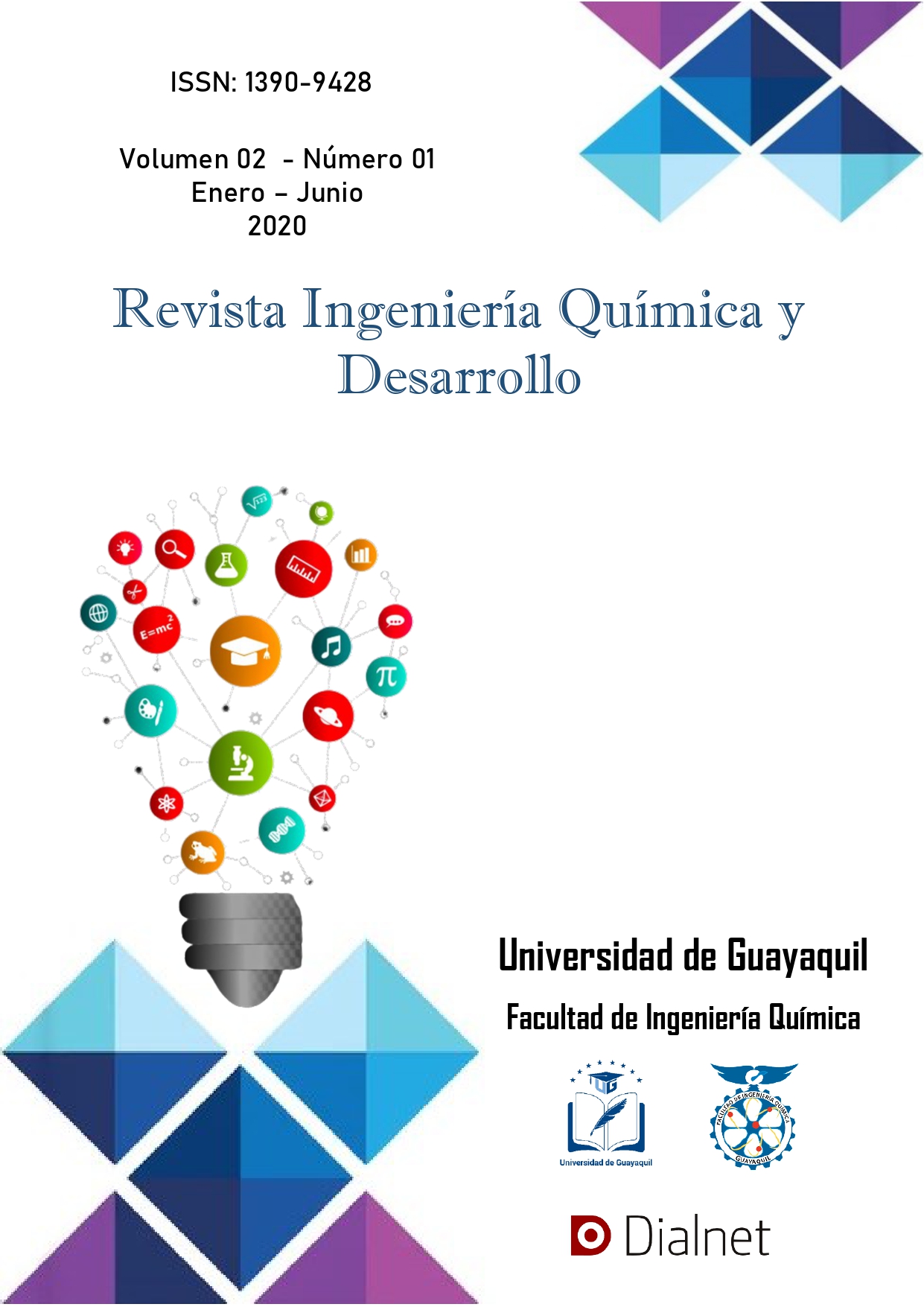Estudio de la cinética química para la obtención de biogás a partir de desechos orgánicos (residuos de frutas no cítricas y estiércol vacuno) para la validación del diseño y operatividad de un biodigestor didáctico anaerobio
Contenido principal del artículo
Resumen
En este proyecto se realiza el montaje de tres biodigestores (uno con agitación 43,10 L y dos sin ella 3 L), las materias primas son los residuos de frutas no cítricas (banana y papaya), inóculo y estiércol vacuno previamente homogenizadas y en diferentes porcentajes de concentración (relación estiércol-fruta es 80:20). Durante la fase experimental se efectuaron mediciones periódicas de las variables de control tales como pH, demanda química de oxígeno, temperatura y contenido de sólidos en los reactores. La velocidad de degradación se formula como la generación de biogás en diversas condiciones siendo la hidrólisis la etapa limitante del proceso, se obtiene un efluente rico en nitrógeno y biogás con mayor porcentaje en metano. El tiempo de residencia hidráulica es de 24 días, con base a los resultados de las mediciones experimentales y ajustes por el método integral por tanteo, se obtiene que la mezcla óptima para el proceso es la mezcla II, siendo una reacción de orden n=1 y la constante cinética es k= 0,0781 d-1. El objetivo del proyecto abarca el estudio de la velocidad de degradación de residuos de frutas no cítricas y estiércol vacuno con respecto a una serie de parámetros mencionados anteriormente
Detalles del artículo
Sección

Esta obra está bajo una licencia internacional Creative Commons Atribución-NoComercial-SinDerivadas 4.0.
Cómo citar
Referencias
D. Almeida Streitwieser, D. A. Regalado y M. J. Ampudia, «Estudio de la co-digestión anaeróbica de desechos orgánicos agroindustriales,» vol. 2, nº 2, 2010.
S. Nogués, D. García y A. Rezeau, Energía de la biomasa, vol. I, C. d. t. d. -. S. e. renovables, Ed., Zaragosa: Presas Universitarias de Zaragoza, 2010, p. 552.
F. D. Morla, O. Giayetto, G. A. Cerioni y E. M. Fernandez, «Crecimiento Y partición de biomasa de dos cultivares de maní (Arachis hypogaea L.) en distintas fechas de siembra en Río Cuarto, Córdoba (Argentina),» European Scientific Journal, vol. 12, nº 30, p. 19, 15 Octubre 2016.
M. Henze, G. A. Ekama y D. Brdjanovic, Tratamiento Biológico de Aguas Residuales, Principios, Modelación y Diseño, M. Henze, G. A. Ekama y D. Brdjanovic, Edits., London: IWA Publishing, 2017, p. 592.
R. Río, C. Álvarez, E. Ayemerich, E. Bedmar y M. Carballa, De Residuo a Recurso. El Camino hacia la Sostenibilidad, vol. II, J. Moreno, R. Moral, J. Pascual y M. Bernal, Edits., Barcelona: Mundi-Prensa, 2014, p. 322.
O. Vega y M. Bolaños, Uso y acceso a las energías renovables en territotio rurales, O. Vega, Ed., San José: Instituto Interamericano de Cooperación para la Agricultura (IICA), 2015, p. 50.
M. Caballero, S. Lozano y B. r. Ortega, «Efecto invernadero, calentamiento global y cambio climático,» Revista Digital Universitaria, vol. 8, nº 10, p. 11, 10 Octubre 2016.
P. Acevedo, «Biodigestores de doble propósito- producción e investigación para granja porcícola residuos,» Revista ION, vol. 19, nº 1, p. 60, 28 Agosto 2006.
J. Rico, «El biogás sigue frenado y el biometano disparado,» Energías Renovables, p. 6, 26 Marzo 2018.
J. Martí, «Desarrollo de la Investigacion de biodigestores en Ecuador,» Quito, 2015.
E. Rozano y J. Dapena, Tratamiento biológico de las aguas residuales, vol. 1, J. Bravo, Ed., Barcelona: Ediciones Díaz de Santos, S.A., 2002.
A. Romero, «Aprovechamiento de la biomasa com fuente de energía alternativa a los combustibles fósiles,» Real Academia de Ciencias Exactas, Físicas y Naturales, vol. 104, nº 2, p. 15, 2010.
L. Magaña, E. Torres y C. Sandoval, «Producción de Biogás a Nivel Laboratorio Utilizando Estiércol de Cabras,» Acta Universitaria, vol. 16, nº 2, p. 12, 2 agosto 2010.
M. Ampudia, Investigación de la condiciones óptimas y de la cinética del proceso de biodigestión anaerobia de desechos orgánicos agroindustriales y estiércol vacuno, Quito: Universidad San Francisco de Quito, 2011, p. 92.
J. Giraldo y L. Carmona, «El gas metano en la producción ganadera y alternativas para medir sus emisiones y aminorar su impacto a nivel ambiental y productivo,» Revista Colombiana de Ciencias Pecuarias, p. 17, 2005.
